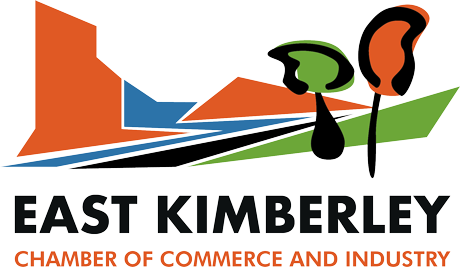Join our mailing list and stay up-to-date with news and events from East Kimberley Chamber Of Commerce and Industry.
Kimberley DAMA – Frequently Asked Questions
FAQs for employers
The December 2023 variations do not affect your existing Labour Agreement, which will continue to be in effect based on the provisions of the ‘EK’ DAMA (now Kimberley DAMA) prior to 22 December 2023. If you want to access any of the new variations and/or occupations, you can request these by way of a variation to your existing agreement, or request them in the future at the same time as seeking endorsement to add further occupations/positions. For information on varying your existing Labour Agreement, see the Kimberley DAMA Information Guide.
No. You can access the Kimberley DAMA in respect of Overseas Workers already in your employ, or you can seek to access the Kimberley DAMA based on a business need with identified skill shortages and seek the Overseas Worker/s after you have had the occupation/s and position/s approved in your Kimberley DAMA labour agreement.
The Kimberley DAMA is designed to complement standard options, not compete or replace them. If there is a standard option that meets your needs the government expects you to use that option. If there is a standard option that meets your needs the government expects you to use that option. However, the standard skilled migration option for the occupation sought may not have a well-defined pathway to permanent residence, or any of the other concessions accessible in the Kimberley DAMA – if these are needed then you may use the Kimberley DAMA option. Another reason you may consider the Kimberley DAMA option is that if you have thoroughly tested the Australian labour market and been unsuccessful, you can have your skill shortages addressed by including them in a Kimberley DAMA labour agreement (with any necessary concessions) without having yet identified any Overseas Worker/s. With occupation/s and position/s pre-approved in your Labour Agreement, you may then be able to attract Overseas Workers with the right skills and experience to your business, nominating them under the Labour Agreement once you decide to employ them.
There are numerous reasons, one being that by having, for example, an age concession approved for the occupation/s you are seeking, it means that you broaden the potential pool of Overseas Workers who may not meet the 45 year age limit in most standard pathways. The occupations you are seeking may also benefit from more experienced and mature-age employees who are able to transfer important skills to your existing workforce.
The EKCCI is required to undertake a labour market analysis every year, usually through a survey across a percentage of employers across all sectors within the Designated Area. This annual analysis informs whether the EKCCI requests any variations to the Kimberley DAMA head agreement, in respect of occupations or concessions. If you have a genuine business need for an occupation to be added, you should put the details in writing in a letter to the EKCCI to help inform their analysis. The letter should be written in such a way that it can be attached to a Deed of Variation submission to the Minister if necessary. If you are aware of other businesses in the Kimberley region with a similar need, you may collaborate with a joint letter, or each write separately. The broader the need, the greater the prospect of the Minister approving the additional occupation/s or concession/s
An Overseas Worker nominated by you under the Kimberley DAMA will only be eligible for a permanent visa under the Kimberley DAMA after they have held their temporary visa for at least two or three years (depending on visa category), working full-time, in the same occupation, within the Kimberley DAMA Designated Area. They can only change employers without affecting this eligibility if the new employer also has a Kimberley DAMA labour agreement and nominates them for the same occupation also within the Kimberley DAMA Designated Area for the remainder of the two or three year period. If the Overseas Worker leaves under any other circumstances, their eligibility under the Kimberley DAMA may cease. Once you have used an approved position in your Kimberley DAMA labour agreement to successfully nominate someone, that position is considered ‘used’, but you may request additional position/s.
The EKCCI cannot advise you which pathway best suits both your circumstances and those of any existing or prospective Overseas Worker you may nominate. Information about each visa type is available on the Department of Home Affairs website. Further information is also available in the Kimberley DAMA Information Guide. If you are unsure, you should seek professional advice from a registered migration agent. You must nominate which visa (or combination of visas for multiple occupations and/or positions) you are seeking at the time of requesting endorsement from the EKCCI.
The EKCCI has numerous obligations under the Kimberley DAMA head agreement. These include ensuring only employers with a genuine skill shortage are given access to the Kimbeley DAMA, that salary and working conditions will be at least equivalent to those of an Australian in the same job, that there will be no exploitation of workers, and other checks and balances. When preparing an endorsement letter for the Department of Home Affairs, the EKCCI value adds with its local knowledge of the labour market and of the business itself. Home Affairs decision-makers place significant weight on credible information provided by the EKCCI (as the DAR). For this reason, the Kimberley DAMA endorsement process is not a ‘tick and flick’ exercise, and there are occasions where the EKCCI may decline to endorse.
No. The Kimberley DAMA can only be used to address skill shortages in full-time permanent roles, usually as part of the core workforce.
FAQs for individual prospective workers
No. The Kimberley DAMA can only be accessed by employers with genuine skill shortages, who may then nominate individuals. Individuals cannot access the Kimberley DAMA program directly or on their own, without going through an employer.
No. The EKCCI is unable to match individuals with prospective employers. Individuals are free to contact prospective employers in the Kimberley region. If the employer is not familiar with the Kimberley DAMA, the individual can direct the employer to the EKCCI for information.
FAQs for WA DAMA
· The Government is committed to supporting the workforce needs of regional Australia.
· The Government acknowledges that the demand for labour agreements and DAMAs has been unprecedented in 2023-24, which is a reflection of sustained workforce shortages in regional Australia.
· Exploring an improved DAMA framework (including a state-led approach to DAMAs) in parallel with broader regional reform, is aligned with the relevant findings of the Migration Review and the commitments of the Migration Strategy to give states and territories a greater role in determining their migration needs, especially in the regions.
· WA employers will continue to be able to access the occupations and concessions of regional DAMAs that are in operation, namely Goldfields, Kimberley, Pilbara and South West DAMAs.
o Employers accessing occupations under DAMAs in their local region should continue to seek endorsement from the relevant Designated Area Representative (DAR) for that region.
· In addition, WA employers will now be able to access a broader list of occupations and concessions made available for the whole state under the new WA DAMA.
· As the DAR for the WA DAMA, the WA government’s Department of Training and Workforce Development, is responsible for endorsing employers seeking to nominate and sponsor migrant workers under the WA DAMA.
o Regional employers based in areas serviced by existing regional DAMAs – Goldfields, Kimberley, Pilbara and South West – will be able to access the WA DAMA for occupations that are not available in their local DAMA.
o Regional employers based outside the areas serviced by existing DAMAs will have full access to all occupations and concessions of the WA DAMA.
· Employers interested in entering into a Labour Agreement to nominate workers under a DAMA must first gain endorsement from the Designated Area Representative (DAR) prior to lodging a labour agreement request with the Department of Home Affairs.
· For employers seeking to access the new WA DAMA, they should contact WA Government’s Department of Training and Workforce Development.
o Further information on the WA DAMA is available on the Migration WA Portal: www.migration.wa.gov.au
· For employers seeking to access existing DAMAs in operation in their local region, they should contact respective DARs of the relevant region.
o Further information on all existing DAMAs across Australia is available on the Department’s website: www.immi.homeaffairs.gov.au/visas/employing-and-sponsoring-someone/sponsoring-workers/nominating-a-position/labour-agreements/designated-area-migration-agreements
· The Government acknowledges that the demand for labour agreements and DAMAs has been unprecedented in 2023-24, which is a reflection of sustained workforce shortages in regional Australia.
· The new WA DAMA demonstrates the Government’s commitment to supporting the workforce needs of regional Australia.
· Further consultation will be undertaken with Designated Area Representatives, unions, industry groups, business and communities in the region to ensure their interests are satisfactorily represented in any future arrangement of DAMAs in Western Australia.

